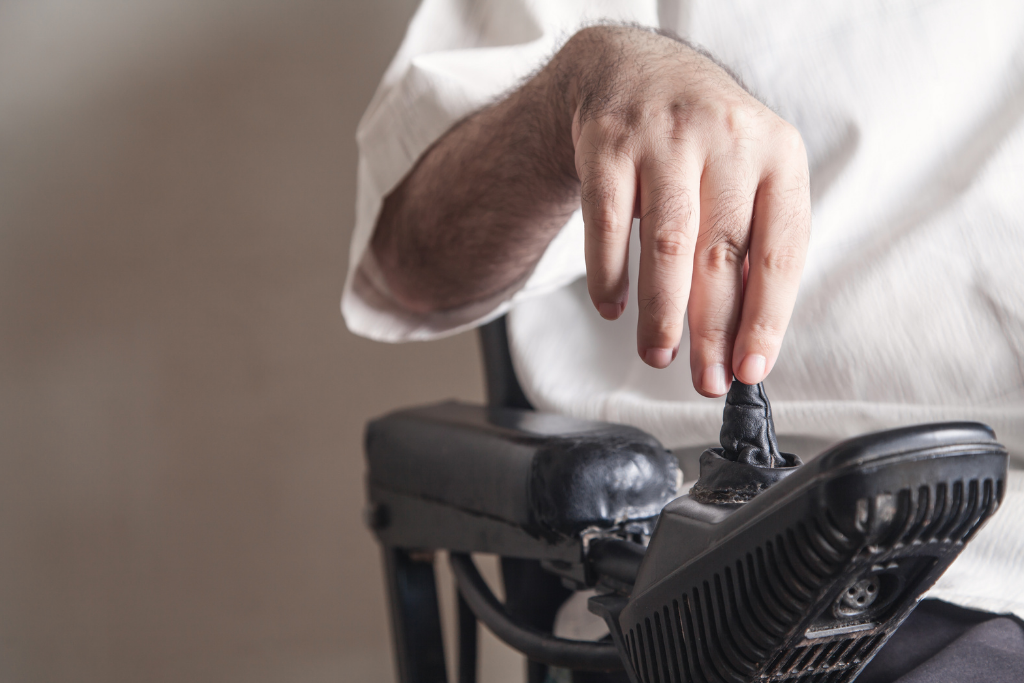Tips for Managing Motor Neurone Disease (MND)
Receiving the news of a motor neurone disease diagnosis is devastating and poses many challenges ahead for yourself and your loved ones. As far as we have come with research surrounding this disease, we do know that there is no known cause and there’s nothing that you should’ve or could’ve done differently
There are medications, support systems and treatments for managing motor neurone disease that include physiotherapy, occupational therapy along with many assistive apparatus. Medications such as riluzole, advice from dieticians and speech therapists and exercises to help you slow down the progression, maintain strength and reduce stiffness.
As you navigate this journey, it’s important to consider various forms of support. This can include accessing NDIS housing providers who specialise in creating living environments tailored to your needs. Additionally, exploring options with NDIS transport providers can ensure you have safe and reliable transportation to medical appointments and other essential activities.
During the lead up to World Motor Neurone Awareness Day on June 21st 2022, we want to help spread awareness about the disease and the things you can implement into your daily routines to help you to live the most comfortable and joyful life possible.
What Are The Different Types of Motor Neurone Disease?
Motor Neurone disease also known as the acronym MND refers to a group of severe but rare neurodegenerative diseases that cause the motor nerves in the spine and brain to lose function over time.
There are several types of MND which are generally classified according to which neurons they affect and whether they are hereditary or not. Up to 1 in 10 people with MND have evidence of family history of the disease which suggests it is likely hereditary. The different types include:
Amyotrophic Lateral Sclerosis (ALS)
ALS is the most common type of MND, it is rapid and fatal. This type affects neurons in both the spinal cord and the brain which in turn affects the muscles in the arms, legs, mouth and respiratory system. On average, people diagnosed with ALS have a life expectancy of 3-5 years however, the famous British Physicist, Stephen Hawking lived with ALS for decades before his death in 2018.
Primary Lateral Sclerosis
Primary lateral sclerosis is a non-fatal type of MND which can greatly affect quality of life. It affects the neurons in the brain specifically and advances much slower than that of ALS. There is a juvenile version of this disease that occurs in children.
Progressive Bulbar Palsy (PBP)
PBP affects the brain stem and can cause frequent choking spells along with difficulty speaking, eating and swallowing. People with ALS often have PBP as well.
Progressive Muscular Atrophy (PMA)
PMA affects the lower motor neurons in the spinal cord, it is rare but causes slow but progressive muscle wasting, mostly in the arms, legs and mouth.
Spinal Muscular Atrophy (SMA)
There are three types of SMA that are an inherited form of MND and which develop in children. They are caused by the genetic change known as SMA1 and often affects the trunk, legs and arms.
How do you Slow Down The Progression of Motor Neurone Disease?
We’re sure if you’ve received an MND diagnosis you’ve spoken in length with your primary care and specialist physicians about your prognosis. Unfortunately, there is no cure for motor neurone disease but thankfully there are treatments that can help to reduce the impact the symptoms will have on your life.
Treatments for MND can include:
- Highly specialised clinics, typically involving a specialist nurse and occupational therapist to help you to make day-to-day tasks easier.
- Physiotherapy and other exercises to maintain your strength and reduce stiffness
- Speech and language therapy
- Working with a dietician and specific diets and eating habits to address
- Medicines that can relieve muscle stiffness and help with saliva problems
- Emotional support for you and your carer
Beyond supportive care, there are medications that can also slow or improve patients’ experience of symptoms and need for additional support. With proper treatment, patients are living longer and better. Maple can help patients get the care and treatments they need.
Improving Symptoms of Motor Neurone Disease
Motor neurone disease (MND) affects and weakens the muscles that enable us to move, speak, breathe and swallow. Symptoms associated with the weakening of these muscles include difficulty moving about, breathlessness, fatigue, difficulty with speaking and swallowing, sleeping problems, stiffness, swelling and cold limbs.
Thankfully there are techniques and aids that can help to ease these symptoms throughout your daily life with MND:
Tiredness, fatigue and insomnia
Things you can do to conserve energy and alleviate fatigue and insomnia include:
- Plan your daily activities in advance
- Establish a regular and healthy sleeping pattern
- Respect your body’s limitations and pace yourself
- Take regular breaks
- Use gadgets and aid devices where possible to make tasks easier
- Make your environment and/or home easier to move around in
- Make sure your bedroom is quiet, comfortable, dark with an optimal temperature
- Consult with your physician about medications that might help
- Consult with your physiotherapist about exercise or massage that may promote relaxation
Swelling and Coldness
If you are suffering from swelling and coldness in your extremities:
- Try gentle massage or exercise to promote circulation and stimulate warmth
- Consult your physician about causes and treatments
- Wear comfortable and warm clothes
- Keep your legs elevated with the support of a cushion
Pain, stiffness and cramps
Stiff joints and muscle cramps and tension can be alleviated by:
- Using slings for supporting your arms or using specially adaptive clothing
- Turn or reposition regularly to avoid developing sore areas of skin
- Using cushions, armchairs and tables for support when seated
- Gentle massaging can alleviate cramp and keep the area warm
- Consult your physiotherapist for exercises that can help
- Consult your physician about medications available for relieving pain and cramping
Breathlessness
Ways to avoid or reduce breathing problems with MND include:
- Sitting up as straight as possible
- Supporting your back and neck to relieve pressure on the lungs and alleviate saliva problems
- Optimise room airflow and temperature
- Avoid people who may infect you with respiratory viruses
- Breathing exercises
- Consult with your speech therapist or physiotherapist about techniques to reduce breathlessness
- Focus on being well rested and follow fatigue management
How Can I Improve My Quality of Life With Motor Neurone Disease?
After numerous studies of the various diseases and those of individuals living with MND, results have found that people with MND reported that seeking ways to both maintain and enhance their quality of life is crucial. In this study supported by the Motor Neurone Disease Association found many positive accounts of seeking out, increasing and incorporating the following into your daily routine to help improve quality of life overall:
- Increasing positive interpersonal interactions with people who share your energy
- Mindfulness and meditation – being present with the current moment and acknowledging emotions, sensations and thoughts as they come and go.
- Psychological flexibility – working towards achieving a particular objective and abandoning finding fault in your current situation, as difficult as it may be.
- Maximising positive experiences – continuing to do the things that make you happy for as long as you are able.
Is Exercise Good for Motor Neurone Disease?
There have been studies in recent years such as this one at the University of Sheffield that have somewhat linked repeated strenuous exercise with the onset of motor neurone disease in people that are genetically vulnerable, like that of professional Italian football players.
This is not to say that we should all stop exercising as Dr Cooper-Knock goes on to say “If everyone stopped exercising that would do more harm than good.” The hope is that these studies will eventually lead the way to tailoring advice for specific professionals.
On the contrary, certain exercises have shown to retain or improve the strength in muscles that may not be affected by MND and maintain flexibility in muscles that are affected. It can also help prevent stiffness in joints. Physiotherapy may also help with breathing difficulties to clear your chest and maintain lung capacity. Several people have found physiotherapy and gentle exercise helpful, including hydrotherapy and swimming.
However, people with MND can tire easily and may find they need to conserve energy. For this reason, exercise for people with MND can be a double edged sword and consultation with your physician should be undertaken for individual recommendations on what exercise will be good for you.
Are there any breakthroughs for MND?
Thankfully, we’ve come a long way in the last few decades and there is hope for the future of motor neurone disease. People are getting better at managing the complications of the illness and are living longer and better than they ever have before after receiving an MND diagnosis.
One recent study by “researchers at Trinity College Dublin have made a major discovery in understanding motor neuron disease. The research team found that MND has 4 distinct patterns of changes in electrical signals that can be identified using EEG (electroencephalography)…The implications of this work are enormous, as we will have new and reliable ways to segregate patients based on what is really happening within the nervous system in MND.” Their breakthrough will be valuable to assist in finding new treatments in the future.


